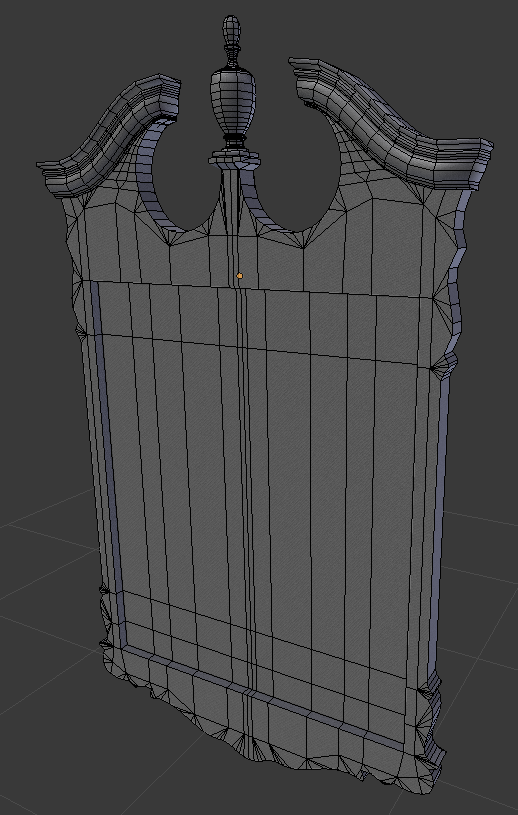The BRAWL² Tournament Challenge has been announced!
It starts May 12, and ends Oct 17. Let's see what you got!
https://polycount.com/discussion/237047/the-brawl²-tournament
It starts May 12, and ends Oct 17. Let's see what you got!
https://polycount.com/discussion/237047/the-brawl²-tournament
Model Topology/Method Question
Hey all, I've been working on this mirror frame model for a project, and I wanted to hear some opinions on if my topology was really the best way to go, or if there is an easier or more efficient way to go about it.

This is what I've got. I extruded from curves for the top, snapped verts to a curve guide at the bottom, and then added edge loops to the sides and snapped those verts to another curve to get the side. It was a nightmare of quads, so I condensed most of the edges into single specific ones. I know there had to be a better way to go about it (and if you have advice on that, I'm all ears), but is the resulting topology necessarily good for a static mesh in a game? I'm using Blender and the final result is 1942 quads.

This is what I've got. I extruded from curves for the top, snapped verts to a curve guide at the bottom, and then added edge loops to the sides and snapped those verts to another curve to get the side. It was a nightmare of quads, so I condensed most of the edges into single specific ones. I know there had to be a better way to go about it (and if you have advice on that, I'm all ears), but is the resulting topology necessarily good for a static mesh in a game? I'm using Blender and the final result is 1942 quads.
Replies
There are still loads of tris you can optimise. The inset region can be 2 triangles when spllt to an element. Once you split those elements off there will be a lot more opportunity for optimising.
Yes, I generally try to split models into pieces as you describe. The moulding and acorn are already separate, I think the part that got me was that I was told this was to be a mirror frame without the mirror, so I think it slipped my mind to split the center part out anyway even though its part of the main block. It helped a lot to do that though!
Your advice helped a lot! Thank you for posting the image! I also try to avoid 6+ edges at one vert, and definitely when something needs to be sculpted later. This model in particular won't be getting subdivided though, which is why I'm testing out collapsing edges together. I actually made this post because the amount of edges at one vertex is freaking me out! I had to know if it would bite me later somehow!
This is much better and perfectly fine for a game asset.